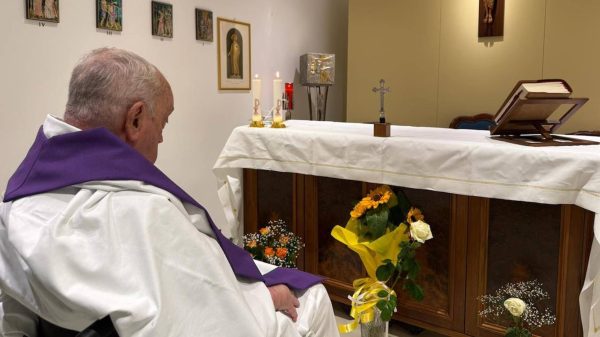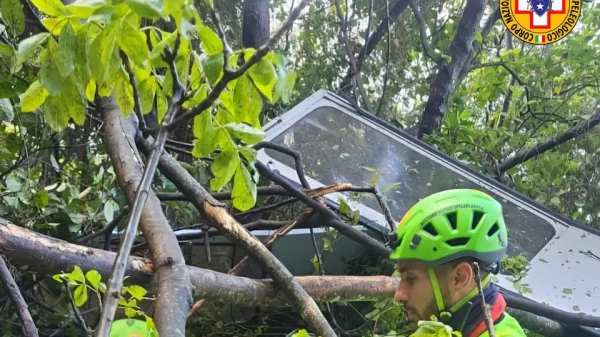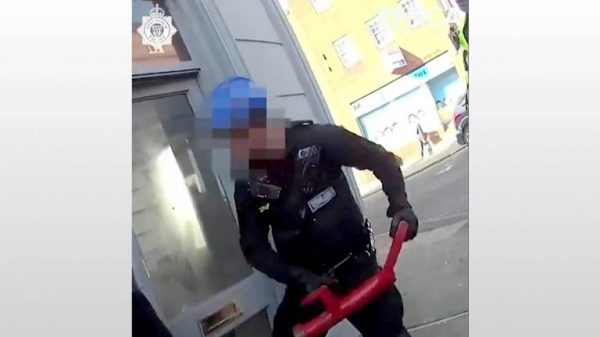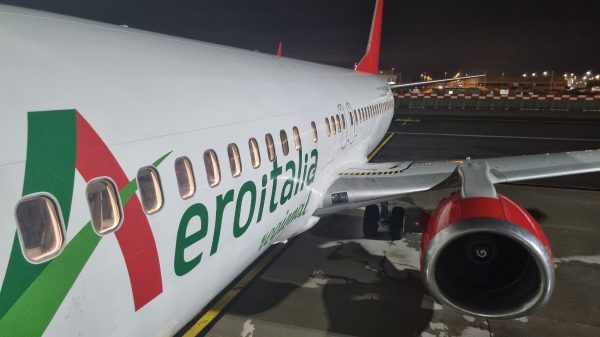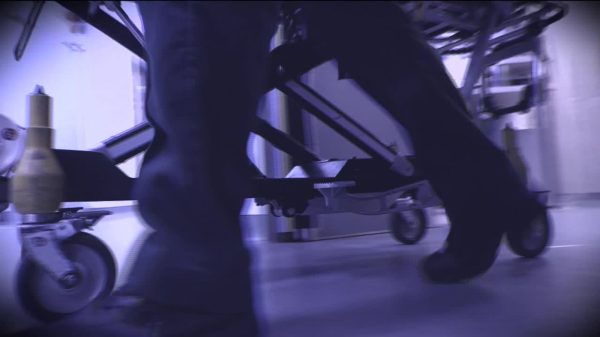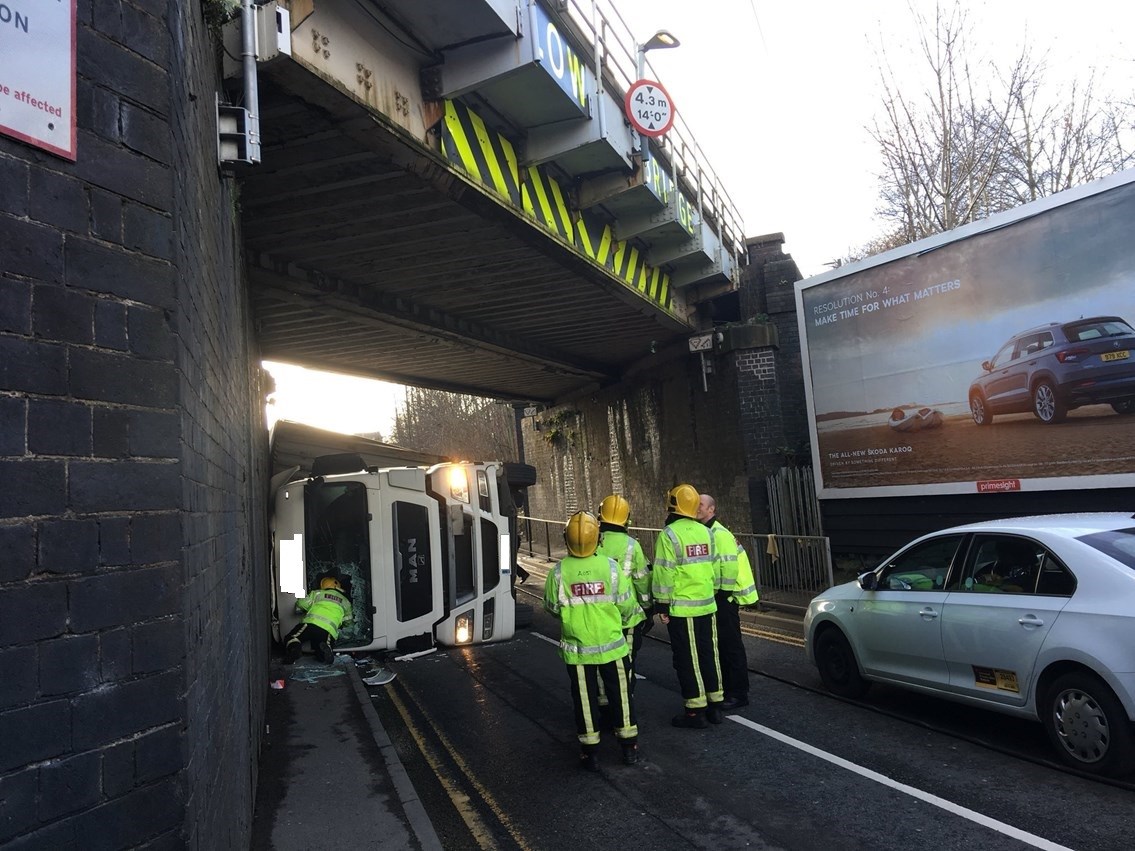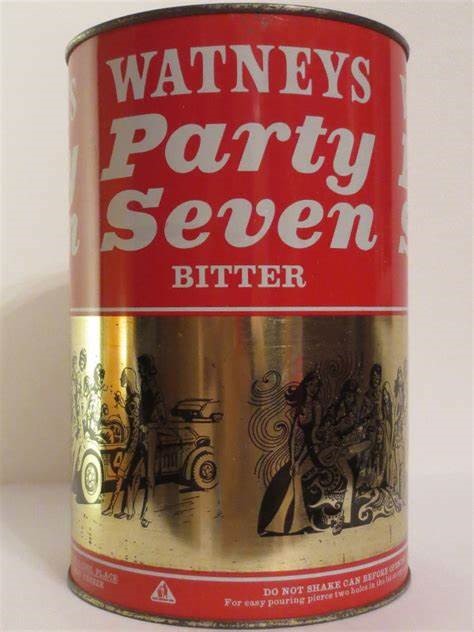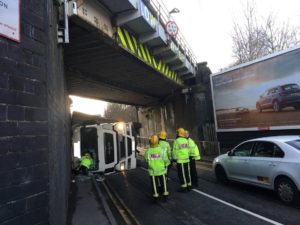
Britain’s “most bashed” railway bridge” is hit once a fortnight by careless lorry and bus drivers.
Railway bridges are hit five times a day on average.
The crashes cost rail passengers 500,000 minutes – or more than 340 days – in lost travel time.
Now, Network Rail has launched a “Lorries Can’t Limbo” campaign to warn drivers about the dangers and the costs.
It’s aimed at knowing what lies ahead on a journey – “Wise Up, Size Up”.
https://twitter.com/i/status/1325717574554775552
The Watling Street bridge on the A5 in Hinckley, Leicestershire, was the country’s most hit bridge – 25 times in the last year.
It caused delays and safety risks for rail passengers, motorists, and locals.
The second most-struck was the Bromford Road bridge in Dudley, West Midlands – crunched 24 times.
This bridge saw the biggest loss of passenger time travel – 4,300 minutes (or 72 hours).
Sir Peter Hendy CBE, chair of Network Rail said:
“We’ve done a lot of work with partners across the industry in recent years to tackle bridge strikes, and whilst it’s encouraging to see our work is paying off with numbers now on the decline, there’s a lot more to be done to cut the unnecessary delays, costs and safety risks they pose.”
During the campaign up to Christmas reminders to ‘Wise Up, Size Up’ will feature on petrol pumps at motorway service stations across Britain.
They will go along with posters reminding drivers to check their routes before setting off.
Unless drivers take notice, firms could lose their operator licence.
Hideo Takano, senior structures advisor at Highways England said:
“Although bridge strikes are comparatively low for our roads they can cause hours of disruption.
“Although we re-open our roads as soon as possible we recognise the frustration delays can cause.
“Around two-thirds of bridge strikes on our roads are caused by vehicles carrying a load.
“So, to reduce the risk of this happening we urge all drivers to follow these simple steps; know your height, plan your route and secure your load.”
Gareth Llewellyn, Driver and Vehicle Standards Agency chief executive said:
“There’s real headway being made and we’re seeing a drop in bridge strikes, but we must keep up this momentum to avoid these dangerous and costly incidents.
“You should ensure your drivers are doing their walkaround checks and noting the height of their vehicle every day.
“While DVSA can fall back on regulatory action to deal with bridge strikes, I’d prefer to see no incidents at all, with operators and drivers checking heights before every journey.”
Most struck railway bridges in Britain 2019/20:
- Watling Street Hinckley, Leicestershire 25 strikes
- Bromford Road Dudley, West Midlands 24 strikes
- St John’s Street Lichfield, Staffordshire 23 strikes
- Stuntney Road Ely, Cambridgeshire 19 strikes
- Abbey Farm Thetford, Norfolk16 strikes
- Thurlow Park Road Tulse Hill, London 14 strikes
- Carlisle Road Cleland, North Lanarkshire 13 strikes
- Harlaxton Road Grantham, Lincolnshire13 strikes
- Stonea Road Stonea, Cambridgeshire13 strikes
- Coddenham Road Needham Market, Suffolk11 strikes
- Lower Downs Road Wimbledon, London11 strikes
- Warminster Road Wilton, Wiltshire 10 strikes
- Prescott Street Wigan, Greater Manchester 10 strikes
- Greenhills Road Paisley, Renfrewshire 9 strikes
- Newhouse Road South Ruislip, London 9 strikes
- Kenworthy Road Homerton, London9 strikes
- St John’s RoadIsleworth, London9 strikes
- Jews Lane Twerton, Somerset9 strikes
- Barrowby Road Grantham, Lincolnshire8 strikes
- Cambridge Road Hitchin, Hertfordshire8 strikes


